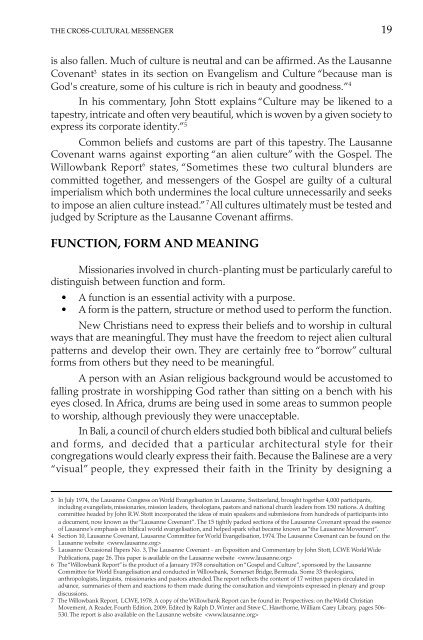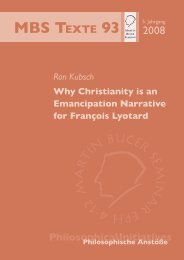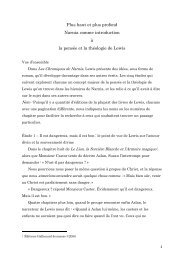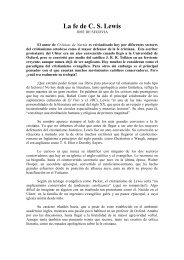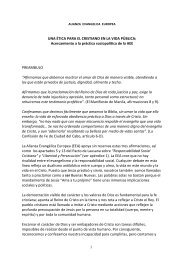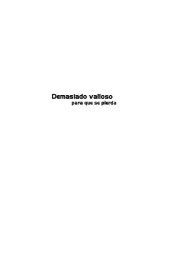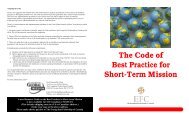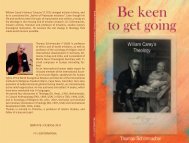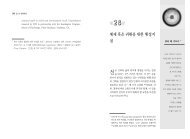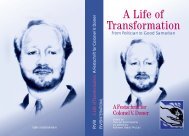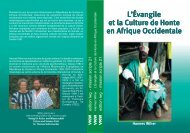WHEN YOU CROSS CULTURES - World Evangelical Alliance
WHEN YOU CROSS CULTURES - World Evangelical Alliance
WHEN YOU CROSS CULTURES - World Evangelical Alliance
Create successful ePaper yourself
Turn your PDF publications into a flip-book with our unique Google optimized e-Paper software.
THE <strong>CROSS</strong>-CULTURAL MESSENGER<br />
is also fallen. Much of culture is neutral and can be affirmed. As the Lausanne<br />
Covenant3 states in its section on Evangelism and Culture “because man is<br />
God's creature, some of his culture is rich in beauty and goodness.” 4<br />
In his commentary, John Stott explains “Culture may be likened to a<br />
tapestry, intricate and often very beautiful, which is woven by a given society to<br />
express its corporate identity.” 5<br />
Common beliefs and customs are part of this tapestry. The Lausanne<br />
Covenant warns against exporting “an alien culture” with the Gospel. The<br />
Willowbank Report6 states, “Sometimes these two cultural blunders are<br />
committed together, and messengers of the Gospel are guilty of a cultural<br />
imperialism which both undermines the local culture unnecessarily and seeks<br />
to impose an alien culture instead.” 7 All cultures ultimately must be tested and<br />
judged by Scripture as the Lausanne Covenant affirms.<br />
FUNCTION, FORM AND MEANING<br />
Missionaries involved in church-planting must be particularly careful to<br />
distinguish between function and form.<br />
• A function is an essential activity with a purpose.<br />
• A form is the pattern, structure or method used to perform the function.<br />
New Christians need to express their beliefs and to worship in cultural<br />
ways that are meaningful. They must have the freedom to reject alien cultural<br />
patterns and develop their own. They are certainly free to “borrow” cultural<br />
forms from others but they need to be meaningful.<br />
A person with an Asian religious background would be accustomed to<br />
falling prostrate in worshipping God rather than sitting on a bench with his<br />
eyes closed. In Africa, drums are being used in some areas to summon people<br />
to worship, although previously they were unacceptable.<br />
In Bali, a council of church elders studied both biblical and cultural beliefs<br />
and forms, and decided that a particular architectural style for their<br />
congregations would clearly express their faith. Because the Balinese are a very<br />
“visual” people, they expressed their faith in the Trinity by designing a<br />
3 In July 1974, the Lausanne Congress on <strong>World</strong> Evangelisation in Lausanne, Switzerland, brought together 4,000 participants,<br />
including evangelists, missionaries, mission leaders, theologians, pastors and national church leaders from 150 nations. A drafting<br />
committee headed by John R.W. Stott incorporated the ideas of main speakers and submissions from hundreds of participants into<br />
a document, now known as the “Lausanne Covenant”. The 15 tightly packed sections of the Lausanne Covenant spread the essence<br />
of Lausanne’s emphasis on biblical world evangelisation, and helped spark what became known as “the Lausanne Movement”.<br />
4 Section 10, Lausanne Covenant, Lausanne Committee for <strong>World</strong> Evangelisation, 1974. The Lausanne Covenant can be found on the<br />
Lausanne website <br />
5 Lausanne Occasional Papers No. 3, The Lausanne Covenant - an Exposition and Commentary by John Stott, LCWE <strong>World</strong> Wide<br />
Publications, page 26. This paper is available on the Lausanne website <br />
6 The “Willowbank Report” is the product of a January 1978 consultation on “Gospel and Culture”, sponsored by the Lausanne<br />
Committee for <strong>World</strong> Evangelisation and conducted in Willowbank, Somerset Bridge, Bermuda. Some 33 theologians,<br />
anthropologists, linguists, missionaries and pastors attended. The report reflects the content of 17 written papers circulated in<br />
advance, summaries of them and reactions to them made during the consultation and viewpoints expressed in plenary and group<br />
discussions.<br />
7 The Willowbank Report, LCWE, 1978. A copy of the Willowbank Report can be found in: Perspectives: on the <strong>World</strong> Christian<br />
Movement, A Reader, Fourth Edition, 2009, Edited by Ralph D. Winter and Steve C. Hawthorne, William Carey Library, pages 506-<br />
530. The report is also available on the Lausanne website <br />
19


